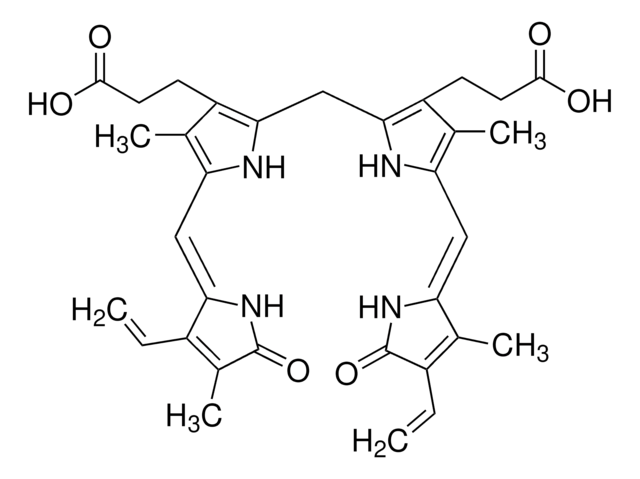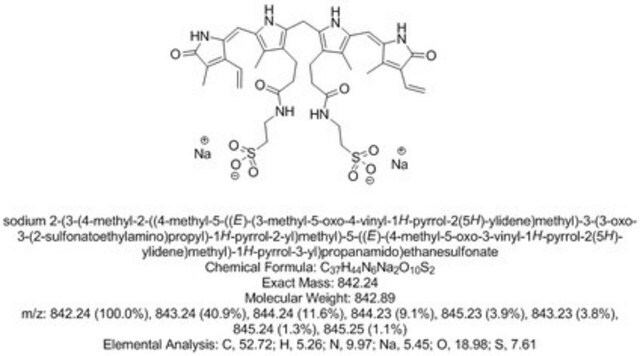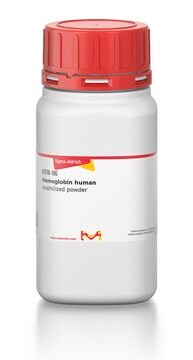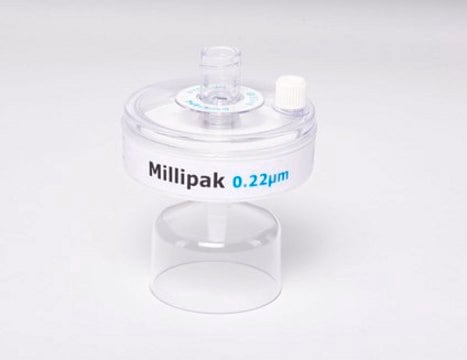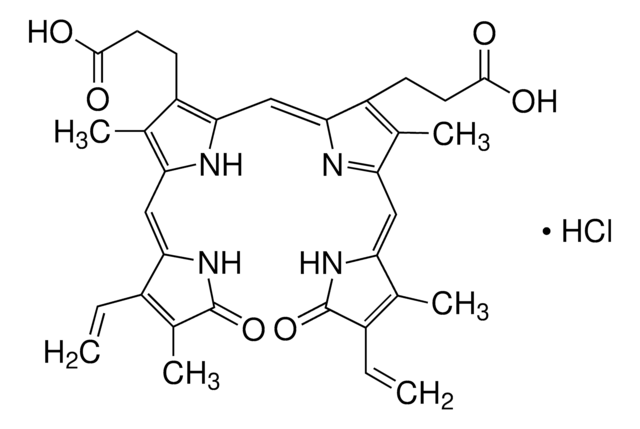2011
Bilirubin
solid, bile pigment, Calbiochem®
Sinónimos:
Bilirubin
About This Item
Productos recomendados
product name
Bilirubin, Principal pigment of bile and one of the major end products of hemoglobin decomposition.
Nivel de calidad
formulario
solid
fabricante / nombre comercial
Calbiochem®
condiciones de almacenamiento
OK to freeze
protect from light
color
red-brown
solubilidad
chloroform: 1 mg/mL
alkaline solution: soluble
Condiciones de envío
ambient
temp. de almacenamiento
10-30°C
InChI
1S/C33H36N4O6/c1-7-20-19(6)32(42)37-27(20)14-25-18(5)23(10-12-31(40)41)29(35-25)15-28-22(9-11-30(38)39)17(4)24(34-28)13-26-16(3)21(8-2)33(43)36-26/h7-8,13-14,34-35H,1-2,9-12,15H2,3-6H3,(H,36,43)(H,37,42)(H,38,39)(H,40,41)/b26-13-,27-14-
Clave InChI
BPYKTIZUTYGOLE-IFADSCNNSA-N
Descripción general
Acciones bioquímicas o fisiológicas
Reconstitución
Otras notas
Cell permeable: no
Reversible: no
Product does not compete with ATP.
Primary Target
Información legal
Código de clase de almacenamiento
11 - Combustible Solids
Clase de riesgo para el agua (WGK)
WGK 2
Punto de inflamabilidad (°F)
Not applicable
Punto de inflamabilidad (°C)
Not applicable
Certificados de análisis (COA)
Busque Certificados de análisis (COA) introduciendo el número de lote del producto. Los números de lote se encuentran en la etiqueta del producto después de las palabras «Lot» o «Batch»
¿Ya tiene este producto?
Encuentre la documentación para los productos que ha comprado recientemente en la Biblioteca de documentos.
Los clientes también vieron
Nuestro equipo de científicos tiene experiencia en todas las áreas de investigación: Ciencias de la vida, Ciencia de los materiales, Síntesis química, Cromatografía, Analítica y muchas otras.
Póngase en contacto con el Servicio técnico